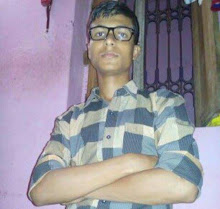Even though Thiruvananthapuram was never a serious landmark in India's cricketing map, it was host to some interesting matches in the 1980s, including a couple of international ones. The University Stadium in the locality of Palayam, with a seating capacity of 20,000, was the closest to a cricketing ground the city had.

The West Indians are said to have played a match in the city as far back as in 1961. Their legendary opening batsman Conrad Hunte hit Kerala's fastest bowler so far out of the park that the ball was never retrieved. I was a sixth grade student at the city's St. Joseph's school when England, under Keith Fletcher, toured India in 1981. The only remarkable event of that dull six-Test series was a double century by Gundappa Viswanath in Madras. The Englishmen visited Thiruvananthapuram to play a friendly one-day match against the state team. Seeing the news headline "MCC vs. Kerala Chief Minister's XI", I naively believed that Kerala's chief minister, Mr EK Nayanar, would pad up and play!
The year 1983 saw India progress from also-rans to world champions. West Indies, under a 39-year-old Clive Lloyd, toured India and humiliated us 3-0 in Tests and 5-0 in the ODIs to avenge the loss at Lord's. Midway through the tour they came down to Thiruvananthapuram to take on the India Under-22s, led by Manoj Prabhakar. West Indies rested Gordon Greenidge, Lloyd and keeper Jeff Dujon. Malcolm Marshall, India's wrecker-in-chief in the Tests, was 12th man. Batting first, India U-22s ran up a tidy score, thanks to a century by opener Jignesh Sanghani. West Indies started their reply on the second morning, with Haynes and Richardson going hammer and tongs. The much-awaited batsman, Viv Richards with his famous swagger, came in at six down, minus his trademark maroon cap. He did not last long as the spinning guiles of a skinny 18-year-old lad called WV Raman got him on 1. Raman, who took five wickets that day, went on to make a mark as a first-class batsman and represented India. Fireworks for the day were courtesy the lanky Winston Davis, who smashed three consecutive sixes off a clueless Avinash Kumar. The crowd was on its feet. Davis offered front-footed defensive prods to the next three balls. Michael Holding got on his knees and casually flicked a bowler over the ropes, and Marshall, beyond the boundary, provided comic relief by running to catch it. The match ended in an anti-climax as the visitors, leading by 82, hurriedly left to catch their flight to the next venue.
A Wills Trophy one-day quarter-final between Haryana and Baroda was staged here in February 1984. Haryana, led by the medical practitioner Ravinder Chadha, and boasting of Chetan Sharma and Rajinder Goel in their ranks, beat Baroda, with bespectacled veterans in captain Anshuman Gaekwad and Surinder Amarnath, as well as to-be India keeper Kiran More, by 17 runs. Sharma mankaded an impetuous non-striker in Vinit Wadkar. Saad Jung top-scored for Haryana with 84. A nephew of Mansur Ali Khan Pataudi, he gave up cricket early and later took on wildlife conservation.
Cricket reached fever pitch when the first ever ODI in the city was announced, between India and Australia on 1st October 1984. India were led by Sunil Gavaskar; Australia by Kim Hughes. The umpires in that match were the portly Swaroop Kishen, the first umpire to be awarded the Padma Shri -India's fourth-highest civilian honour, and VK Ramaswamy. The 'pace pitch' of the University Stadium was exploited to the hilt by Carl Rackemann, bowling from the Museum End, and Geoff Lawson from the Church End. The opening pair of Ghulam Parkar and Surinder Khanna, also India's keeper, found the going tough. The batsmen struggled and India folded up in 37 overs. But one man stood out like a majestic warrior with a gem of a knock. When Dilip "Colonel" Vengsarkar, got out for 77, the stadium rose and applauded. The second-highest score in India's 175 was Sandeep Patil's 16. Tom Hogan scalped four wickets. Kapil Dev trapped Kepler Wessels lbw in Australia's reply. Allan Border joined Graeme Wood and a mix-up during a run had him flat on the pitch with his clothes soiled. The crowd cheered every ball of Kapil and Chetan Sharma as the duo sent down a maiden each. Rain intervened in the eighth over, with the visitors 29 for 1. The match was abandoned.
A one-dayer finally did play to its full in Thiruvananthapuram in 1988. India, bolstered by Kris Srikkanth's century - he was dropped in the first over - and Mohinder Amarnath's fifty, scored 239 in 45 overs but lost to West Indies , who surpassed it losing just Gordon Greenidge, who belted 84 with five sixes. The captains were Ravi Shastri and Richards. This was ten days after the 'Hirwani Test.' Phil Simmons scored his first ODI hundred. This time too, the rain gods showered their blessings, but thankfully after the match was over. One of the umpires that day was V Vikramraju, who two years earlier had given Maninder Singh leg-before to herald the second tie in Test history, in Madras.
A long 29 years have sped by since Thiruvananthapuram last hosted an international cricket match. Fittingly, it is a T20I, the rage since a decade now, which will mark this new beginning. As Thiruvananthapuram's sporting fraternity eagerly awaits the India-New Zealand decider, I too can't wait to see Virat Kohli take on Tim Southee firing on all cylinders from the Technopark End.



No comments:
Post a Comment